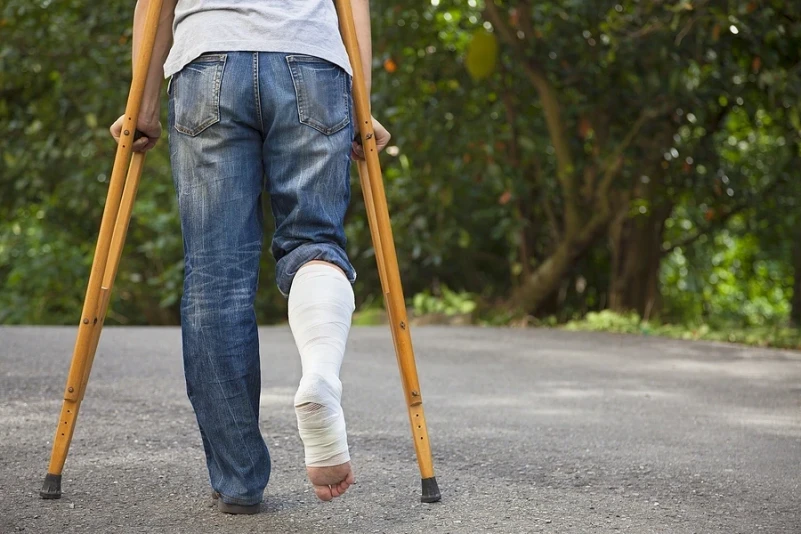Personal Injury Lawyer Wade Hampton

When an injury disrupts your life in Wade Hampton, turn to Mann, Blake & Jackson for compassionate and effective legal representation. Our personal injury lawyers know how to hold negligent parties accountable and can guide you through every aspect of your case. Call 864-777-4262 for your free consultation.
Our practice areas include:
Can You File a Personal Injury Claim If You’re Partially at Fault
Accidents rarely unfold in a neat storyline where one person is clearly wrong and everyone else is purely a victim. Maybe you looked down at your phone just before the light changed on Wade Hampton Boulevard, or you walked across a parking lot while glancing at a weather alert. Moments later a crash, a fall, or another sudden impact left you injured. Now the insurer hints you were partly responsible and questions whether you can even file a claim. The short answer is yes—South Carolina law allows injured people to seek compensation when they share some of the blame, as long as they stay on the right side of the state’s comparative negligence rule.
How South Carolina Views Shared Fault
Our state follows a modified comparative negligence system, sometimes called the “51 percent bar.” You may recover damages if your share of fault is 50 percent or less. Cross that 51 percent line and the courthouse doors close. If you stay under the threshold, any award you receive is reduced by the same percentage of responsibility the judge or jury assigns to you. For example, a $100,000 verdict becomes $70,000 if you are found 30 percent at fault.
Why the Rule Exists
Comparative negligence replaced an older, harsher doctrine that barred recovery for even a sliver of personal fault. Lawmakers wanted a fairer balance: careless defendants should not escape accountability simply because the injured person made a minor mistake, yet people who cause most of their own harm should not profit from it. The 51 percent bar strikes that compromise. It also encourages reasonable settlements because both sides know a jury can spread responsibility among all parties instead of handing a total win to one side.
What Happens When Your Fault Is Under Fifty-One Percent
Once a finder of fact sets your percentage below the bar, the legal process moves on to damages. Economic losses—medical bills, therapy costs, lost wages—are tallied first. Non-economic harms such as pain, scarring, or the loss of weekend bike rides on the Swamp Rabbit Trail are calculated next. The combined total is then reduced by your share of blame. Importantly, you still gain access to every category of damages. The reduction applies only after the full value is determined. That keeps partial fault from eliminating types of compensation you legitimately need.
Gathering Proof to Keep Your Percentage Low
Successful claims depend on evidence that pushes more liability onto the other side. Photos of skid marks on Wade Hampton Boulevard, security video from a storefront, or black-box data showing the other driver never touched the brakes can move the needle in your favor. When the dispute involves a premises hazard—say, a slick floor at a Haywood Road diner—records showing ignored inspections bolster your position. Early medical charts, statements from eyewitnesses, and even cellphone metadata all become bargaining chips that can shift the fault calculation a few critical points.
Common Scenarios With Split Responsibility
- Intersection collisions – You rolled through a yellow light, but the oncoming driver sped well above the limit.
- Rear-end crashes – Your taillights were dim, yet the driver who hit you was texting.
- Slip-and-fall incidents – You were wearing smooth-soled shoes, but the store failed to warn about a leaking refrigerator.
- Dog bites – You reached to pet a dog without asking, though the owner had the animal off-leash in a city park.
Each event involves choices by more than one party. Comparative negligence sorts those choices into percentages, letting compensation reflect real-world complexity instead of an all-or-nothing outcome.
How Insurance Adjusters Use Comparative Fault Against You
Expect insurers to magnify every misstep. They may argue you “should have seen” the other car, walked a different route, or read a hidden warning sign. Sometimes they assign arbitrary percentages—40 percent here, 60 percent there—without solid backing. Never accept those numbers at face value. Ask what evidence supports them, and share any proof you have that places greater fault elsewhere. Adjusters know juries do not like guesswork; solid documentation keeps negotiations grounded in facts instead of speculation.
Strategies Your Lawyer May Use
An attorney serving Wade Hampton will dig into official crash reports, subpoena maintenance logs, and interview witnesses before memories fade. They might hire an accident-reconstruction engineer to model vehicle speeds or a human-factors expert to explain why the hazard was not obvious. In multi-vehicle wrecks on the busy U.S. 29 corridor, your lawyer may bring additional defendants into the case so fault can be spread among all negligent actors, reducing your slice of the blame pie and protecting your recovery.
Time Limits and Early Action
South Carolina’s statute of limitations for most personal injury claims is three years from the date of injury. That may sound generous, but comparative negligence defenses grow stronger as evidence disappears—traffic-camera footage is overwritten, pavement scrapes wash away, and witnesses move. Gathering proof early preserves your ability to fight inflated fault percentages later.
Wade Hampton Personal Injury Attorney Focused on Results
When an accident in Wade Hampton causes you harm, trust the personal injury attorneys at Mann, Blake & Jackson to stand up for you. We’re here to provide honest advice and aggressive representation. Call 864-777-4262 to set up your free consultation today.

